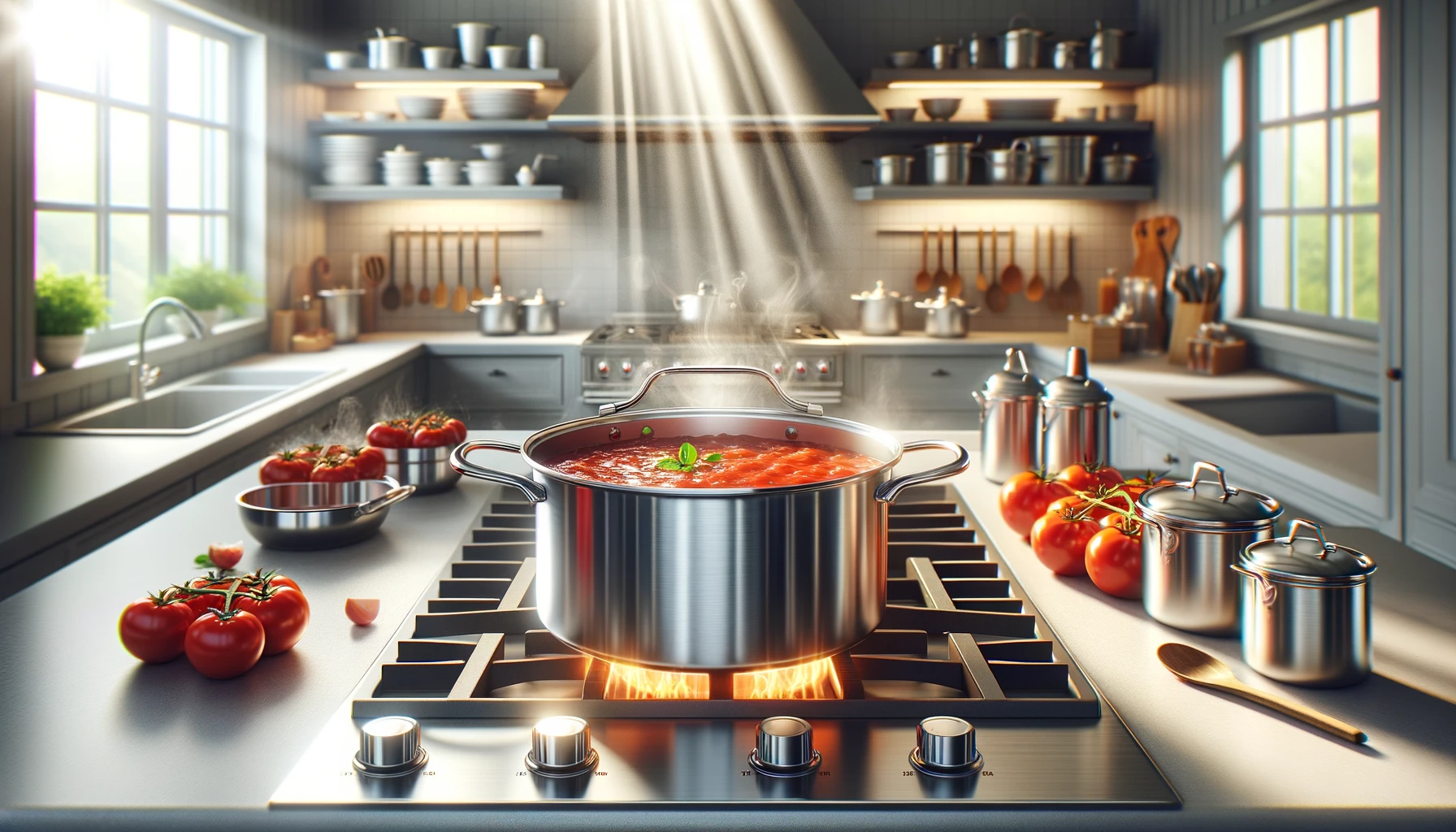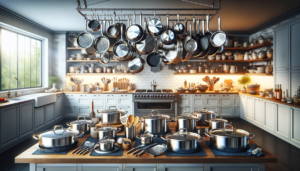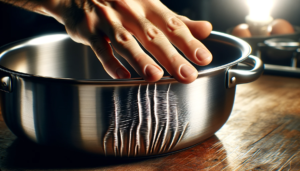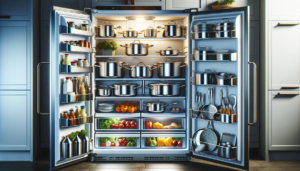Has your stainless steel cookware ever shown signs of damage from cooking tomato sauce? If you’ve noticed some suspicious spots, you may wonder if tomatoes compromise stainless steel over time.
Stainless steel has a reputation for durability and corrosion resistance.
But tomato juice contains acids, so the question arises if repetitive exposure causes subtle deterioration.
Let’s dive in and explore what qualities make stainless steel so resilient and whether tomato juice is innocuous or insidiously erosive over decades of cooking.
Does Stainless Steel React With Tomato Juice?
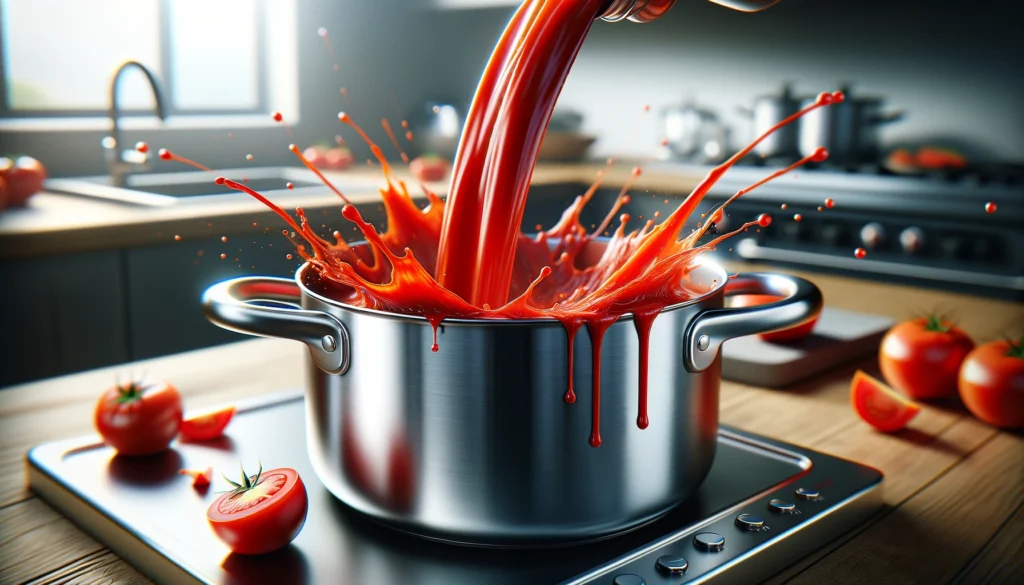
No, stainless steel does not actually react with the weak acids present in tomato juice under ordinary usage conditions and exposure levels.
The chromium in stainless steel forms an inert passivating oxide layer which resists corrosion by the citric acid and ascorbic acid found in tomato juice.
So tomato juice will not directly damage stainless steel surfaces with routine kitchen use.
However, we will explore below why gradual indirect effects can still slowly occur from repetitive tomato juice contact over time if not properly washed.
What Is Stainless Steel?
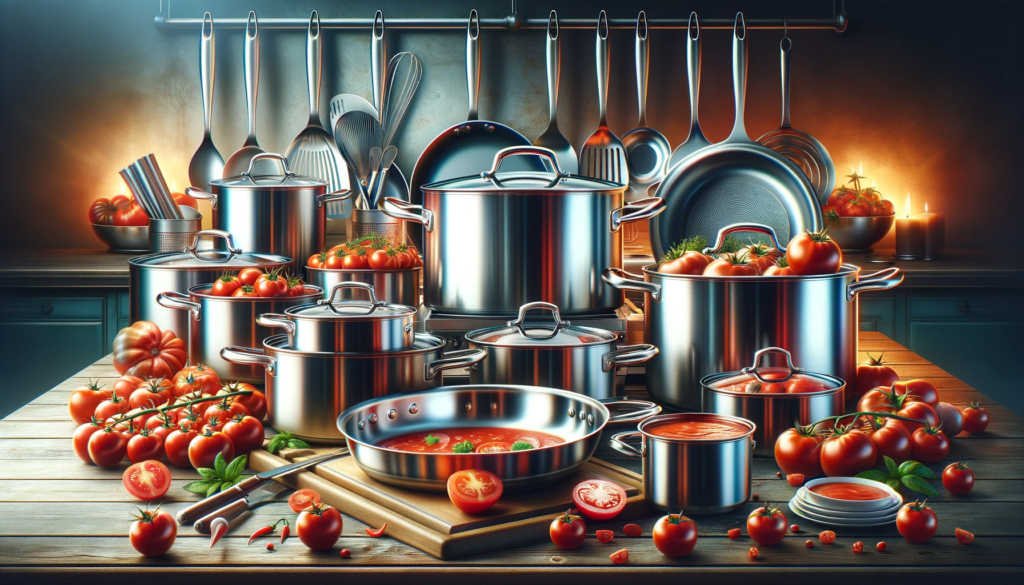
Stainless steel is an alloy composed primarily of iron and then chromium, nickel, silicon, molybdenum and other metals.
The minimum 10.5% chromium content by mass is what provides stainless steel with its distinctive anti-corrosion properties.
The chromium forms an invisible passive oxide layer on the surface when exposed to oxygen, which protects the steel from oxidative damage.
This is why stainless steel resists staining, rusting, and corrosion.
Aside from corrosion resistance, stainless steel is also prized for its durability, hardness, and sleek gray metallic appearance.
It is commonly used for cutlery, kitchen sinks and countertops, household appliances, automotive parts, construction materials like screws and panels, medical devices and implants, and industrial chemical equipment among endless other applications.
Stainless steel is hugely versatile thanks to the range of alloying elements that can customize its properties.
There are different subtypes of stainless steel categorized by their crystalline structure – austenitic, ferritic, duplex, martensitic and precipitation hardening.
The subtypes contain varying amounts of iron, chromium, nickel, manganese, titanium and other metals depending on the intended service environment and desired qualities.
Austenitic stainless steel with added nickel for instance, has enhanced ductility and weldability.
Does Stainless Steel React With Acids?

The chromium oxide layer grants stainless steel an impressive resistance to corrosion.
It can withstand exposure to many acids without erosion or damage to the underlying metal.
However extremely strong acids can eventually overcome this protective barrier and react with the alloy, especially over prolonged contact.
When stainless steel is exposed to oxygen, a very thin passivating layer of chromium oxide forms on the exterior surface.
This invisible nanoscale layer protects the bulk steel from coming into contact with oxygen, moisture, or other corrosive substances.
So instead of the metal reacting, this inert chromium oxide barrier absorbs the damage.
However sufficiently concentrated strong acids like hydrochloric acid, sulfuric acid, or nitric acid do possess the corrosive power to break through the chromium oxide layer and react with the iron, nickel, and chromium in the alloy itself.
Gradually, metal atoms at the surface begin dissolving into the acid solution as positively charged cations.
The severity depends on acid strength and duration of exposure.
Will Tomato Juice Damage Stainless Steel?
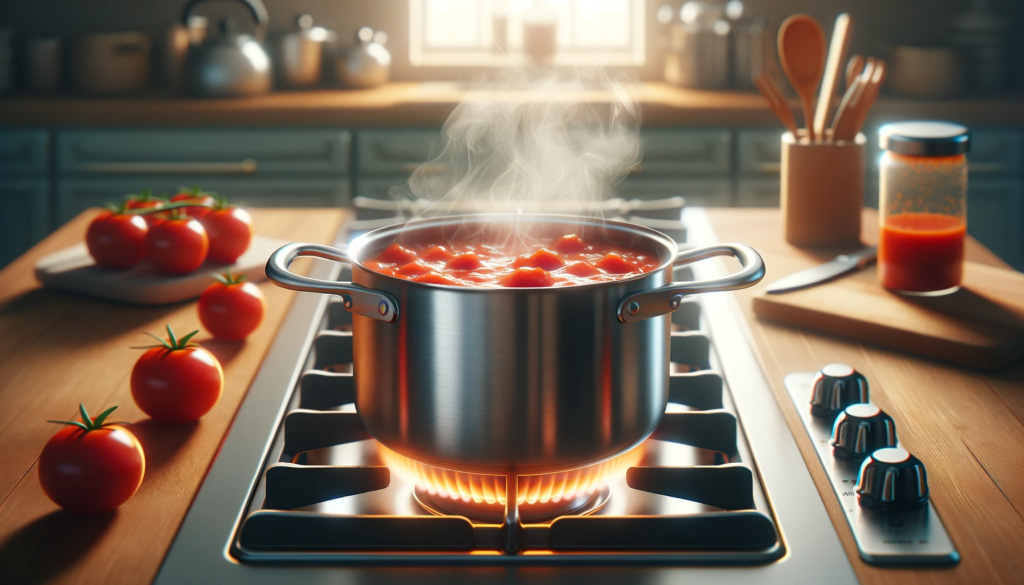
Tomato juice is very unlikely to cause any corrosion or damage to stainless steel surfaces under typical household usage and exposure levels.
Although tomato juice contains weak organic acids like citric acid and ascorbic acid, these do not contain sufficient acidic power to disrupt the protective chromium oxide layer that gives stainless steel its anti-corrosion tendencies.
The passive film on stainless steel alloys is able to resist dissolution when exposed to lower concentrations of acids with a pH above 3.
Given tomato juice falls into this category with a pH around 4-4.5, brief contact will not harm stainless steel kitchenware or surfaces.
Essentially stainless steel is designed to endure such food acidity without concern of degradation.
Over a long period of time, residual tomato juice that is allowed to dry on stainless steel may start to gradually accumulate stains or sticky residues if not cleaned.
But these would be merely superficial stains limited to the surface chromium oxide layer.
As with any kitchen surface, best practice is to wipe down and wash containers after use to prevent incremental buildup.
Long-Term Effects Of Tomato Juice On Stainless Steel
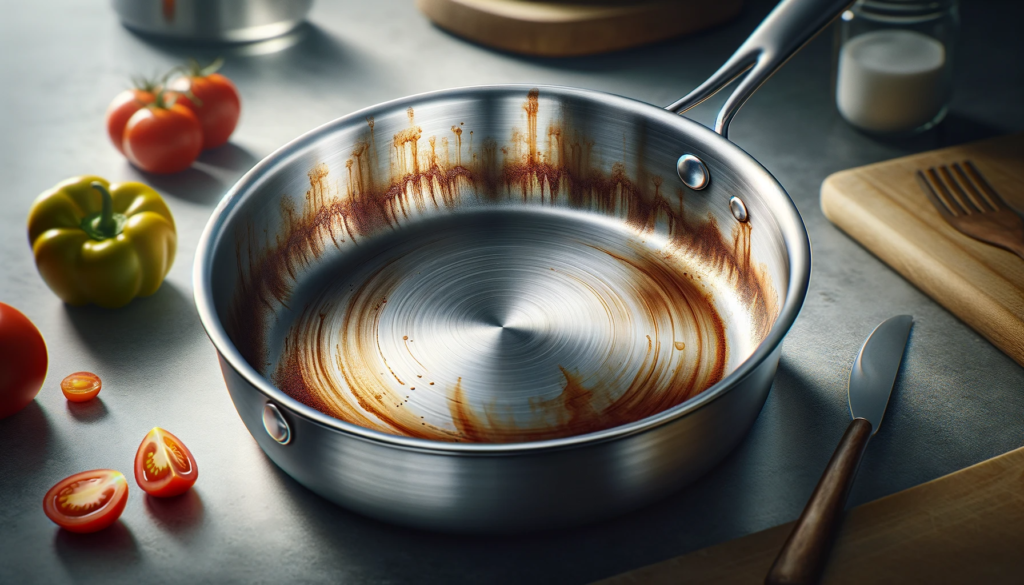
Interestingly, while tomato juice itself is benign, over many years, repetitive and prolonged exposure can indirectly kickstart slight corrosion effects.
The main mechanism is through gradual leaching of nickel from the alloy surface over time in an acidic environment.
In stainless steel, sufficient surface nickel content is necessary to maintain stability of the protective chromia layer.
But decades of periodic exposure to even weak acids slowly strips small amounts of nickel from the surface.
This selective removal of nickel atoms creates weaknesses and gaps in the passive film.
The depletion also sets off an electrochemical reaction resulting in development of tiny perforations in the oxide layer.
With the chromium oxide barrier now compromised, the exposed underlying steel becomes vulnerable to pitting corrosion which can expand into larger holes and rust formation.
So to prevent such degradation over very long time periods, stainless steel containers used for tomato juice should be promptly washed after use to rinse away residual traces of organic acids.
Timely cleaning removes the agents responsible for gradually leaching out the nickel content critical to ongoing anti-corrosion tendencies.
Tips For Using Stainless Steel With Tomato Juice
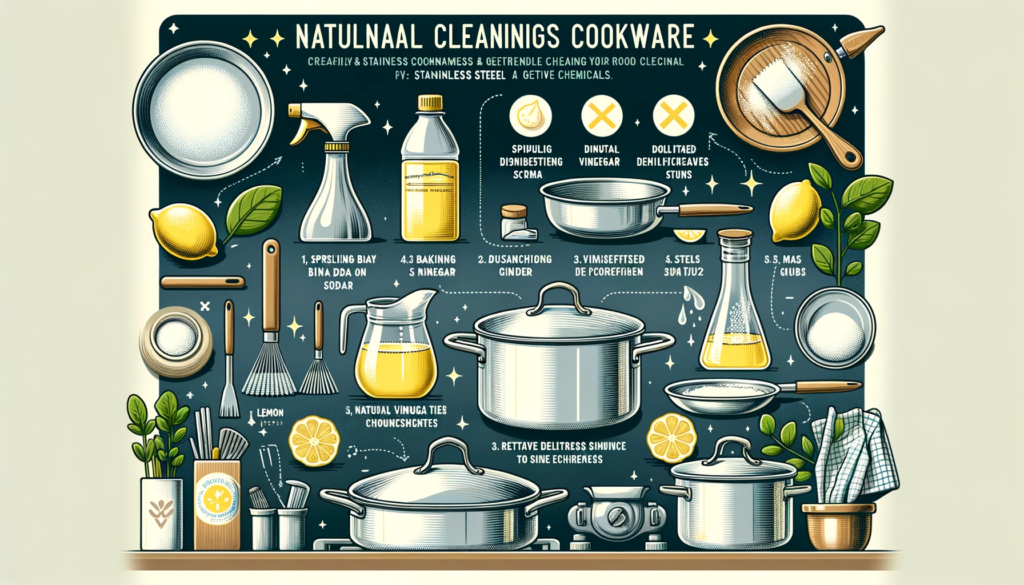
Here are some helpful tips for safely utilizing stainless steel cooking containers, utensils and surfaces in contact with tomato based foods:
Always Rinse With Water After Exposure
After using tomato juice or sauces in stainless steel pots or dishes, be sure to give them a thorough rinse.
Washing briefly under running tap water removes any visible tomato residues which if left to dry over time, contribute to accumulated buildup that must later be scrubbed off.
Use a Soft Sponge With Mild Detergent
For periodic cleaning of superficial stains, gently wipe and scrub with a soft sponge and mild detergent, then rinse thoroughly.
Check manufacturer guidelines for appropriate cleaners.
Avoid scouring powders or wired metal brushes that could scratch the protective surface layer.
Limit Salt Exposure
Use stainless steel pans and oven trays minimally for cooking or storing salty foods over the long term.
The combination of salt and acid from tomatoes can very slowly accelerate pitting corrosion so prompt washing after exposure to such dishes is especially prudent.
Expect Some Tea Staining
Despite its reputation for being stain resistant, with prolonged use, stainless steel can develop a tinted tea stain film on the surface after repetitive tomato sauce cooking.
These harmless stains are cosmetic imperfections associated with leaching of metal ions from steel but will not undermine the structural integrity or durability.
Nonetheless for aesthetic reasons, they can be removed with stained glass cleaners.
Avoid Unnecessary Direct Acid Contact
While stainless steel can endure tomato juice and sauce without issue, best practice is still to minimize unnecessary direct contact time with highly acidic substances.
For instance repeatedly storing lemon juice in a steel bottle for days on end could eventually deplete nickel levels.
But brief exposures will not pose any concerns for regular cooking demands.
By following these simple food safety protocols, stainless steel cookware remains reliably resistant to the weak acidity inherently present in tomato based dishes.
Prompt post-use washing preserves the longevity and sustained performance of stainless steel items.
So tomato sauce aficionados can confidently utilize stainless steel pans with no concerns of red sauce induced damage over typical time horizons.
Conclusion
In conclusion, stainless steel is generally not impacted by exposure to tomato juice or other tomato-based foods under ordinary usage conditions, thanks to its protective chromium oxide layer.
While negligible gradual effects can accrue over decades, simply washing promptly after use minimizes any long-term issues.
So both home and professional cooks can confidently utilize stainless steel despite its daily contact with tomato sauce, juice and residues.
